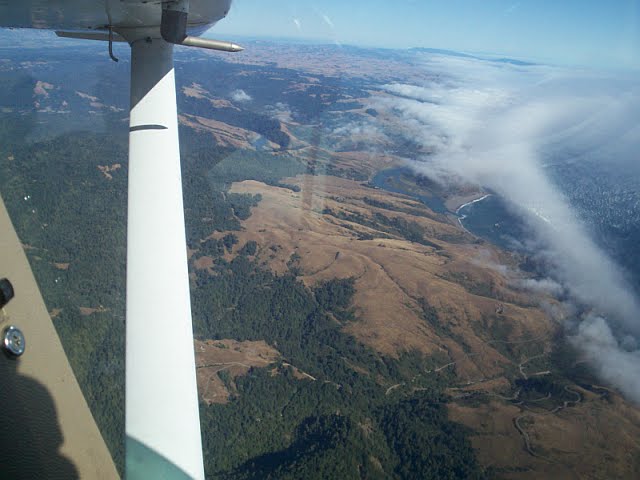Originally, I thought this was something you always did on the ground before the flight. I soon discovered that air traffic control, the weather and other factors will frequently require you to re-plan for a new approach while in the air. Understanding the published approach to an airport is critical to, well, survival. It is, therefore, important to have a clear system for preparing for an approach.
The new FAA "briefing strip" that is published as part of the new instrument approaches goes a long way to simplifying this process. Here's a typical example:
The new strip has not been updated on all approach plates. As I understand it, the new version is only created when a change to an existing procedure is required.
The new briefing strip attempts to group most of the critical data in a consistent format at the top of the approach plate. As a IFR neophyte I wish they had called it something other than "briefing strip".
In my un-learned opinion, the "briefing strip" should be re-named the "partial briefing strip". The strip has some of the information for the approach briefing but certainly not all of the critical data. To my somewhat limited mentality, the term "briefing strip" just confuses the process of "briefing the approach". Why didn't they call it Bill or George, or anything but "briefing strip"???
Of course the experienced IFR pilot will say, "Well, duhh, of course it doesn't have everything. You have to read the entire approach to understand everything."
I understand that argument so I guess my problem is the confusion of terminology. For the uninitiated student pilot "briefing strip" and "approach briefing" imply similar functions. Yet to properly "brief the approach", you have to do a few more steps than just review the briefing strip.
These steps include:
- Decision height or minimum descent altitude
- Minimum visibility
- Missed approach guidance frequency
- Any special notes or procedures noted on the approach plate
- Review appropriate airspeed and flap configuration
- Consider what you will want to do if you have to "go missed". ie: request another attempt or divert to an alternate.
Approach Briefing
1. Approach runway (on briefing strip)
2.Nav aid frequency (on briefing strip)
3. Approach course (on briefing strip)
4. Glideslope intercept/FAF
5. Decision Altitude / Minimum Descent Altitude
6. Timing
7. Touch down zone elevation (on briefing strip)
8. Runway length (on briefing strip)
9. Landing Distance
10. Airspeed
11. Flap setting
12. Missed Approach Point
13. Missed Approach Procedure (on briefing strip)
14. Where to after the missed approach - another attempt or divert to alternate?
15. Procedure Notes
The 6 "A's" of the Approach
- ATIS - get it as early as possible. This will tell you if you can expect to fly the full approach or if you will need to circle.
- Altimeter set - from the ATIS
- Approach Brief -
- How long? - approach timing - segments and missed approach time
- How low? - minimums and segments
- Missed approach - always PLAN to go missed
- Avionics set - Navs and Coms
- Airspeed - fixed at final approach fix
- Align - verify final approach course
I will update this if I learn of additional issues should be noted. Part of briefing the approach is being able to do it fairly quickly. Presumably, after some level of practice, a list such as the above should not be necessary. However, at my stage of learning I find this helpful to summarize the information I need to be aware of.
Gary


No comments:
Post a Comment